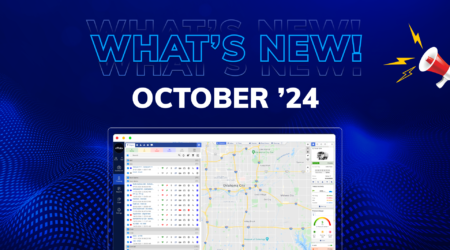Real Time Tracking System for Fleets – The Complete Guide
Introduction to Real-Time Vehicle Tracking System
Real Time Tracking System for Fleets – In today’s fast-paced world, businesses and individuals alike are constantly seeking ways to streamline operations, improve efficiency, and ensure safety. One technology that has emerged as a game-changer in achieving these goals is the Real-Time Vehicle Tracking System. In this article, we will explore the significance of this system, its working principles, key features, advantages, challenges, and the exciting future trends it holds.
Key Takeaways
Definition of Real-Time Vehicle Tracking System
A Real-Time Vehicle Tracking System is a technology that enables the real-time monitoring and management of fleets, vehicles, and assets. It provides precise location data, speed, direction, and other essential information in real-time.
Benefits for Businesses and Individuals
This system offers a plethora of benefits for both businesses and individuals. It enhances efficiency, reduces operational costs, improves safety, and contributes to better customer service. For individuals, it can provide peace of mind by ensuring the safety and security of loved ones on the road.
Emerging Trends in Vehicle Tracking Technology
As technology advances, so does the world of vehicle tracking. Emerging trends include the integration of Internet of Things (IoT) and Artificial Intelligence (AI) for smarter and more predictive tracking, predictive analytics in fleet management, and the continuous evolution of vehicle tracking technology.
Understanding Real Time Vehicle Tracking System
How Real-Time Vehicle Tracking Works
At the core of a Real-Time Vehicle Tracking System lies the Global Positioning System (GPS) technology. GPS satellites orbiting the Earth communicate with tracking devices installed in vehicles, providing accurate location information. This data is then transmitted through satellite communication or the internet to a central control system.
Key Features of Real Time Vehicle Tracking Systems for Fleets
- Live Tracking: Real-time location data allows businesses to monitor their vehicles’ movements as they happen, enabling better decision-making and immediate response to issues.
- Route Optimization: By analyzing real-time data, fleet managers can optimize routes, leading to fuel savings and efficient time management.
- Geofencing: Establishing virtual boundaries helps enhance security. Alerts are triggered when a vehicle enters or exits predefined areas, enabling proactive measures.
- Driver Behavior Monitoring: Tracking systems can monitor driver behavior, promoting safe driving practices and compliance with regulations.
- Maintenance Monitoring: The system provides data on vehicle health, allowing proactive maintenance, reducing breakdowns, and prolonging vehicle life.
- Integration with Other Software: Integration with other business software enhances fleet management capabilities and streamlines operations.
- User-Friendly Interface: An intuitive interface ensures that users can easily access and utilize the tracking system effectively.
Advantages of Implementing a Vehicle Tracking System
- Increased Efficiency and Cost Savings: Real-time data allows businesses to optimize routes, reduce fuel consumption, and enhance overall operational efficiency, resulting in substantial cost savings.
- Enhanced Customer Service: Businesses can provide customers with accurate delivery estimates, improving satisfaction and loyalty.
- Improved Fleet Management and Safety: Tracking systems enable businesses to monitor driver behavior, ensuring safety and compliance with regulations.
Challenges and Considerations in Real Time Tracking System for Fleets
While the benefits of real-time tracking systems are undeniable, there are some challenges and considerations to keep in mind:
- Data Privacy Concerns: Collecting and storing real-time data raises privacy concerns. It is crucial to have robust data protection measures in place.
- Cost and Complexity of Implementation: The initial cost and complexity of implementing tracking systems can be a barrier for some businesses.
- Dependence on GPS and Internet Connectivity: The system’s functionality relies on GPS and internet connectivity. Poor signals or network issues can affect tracking accuracy.
The Future of Vehicle Tracking Systems
The future of vehicle tracking systems is exciting and filled with innovation:
- IoT and AI Integration: Integrating IoT and AI will make tracking systems smarter, allowing for predictive maintenance and more efficient operations.
- Predictive Analytics in Fleet Management: Predictive analytics will help businesses anticipate maintenance needs and optimize routes further, improving efficiency and cost savings.
- Evolution of Vehicle Tracking Technology: Vehicle tracking technology will continue to evolve, becoming more accessible, efficient, and tailored to various industries and use cases.
FAQs Section
How does real-time vehicle tracking enhance fleet management?
Real-time tracking provides accurate data on vehicle location, speed, and status. This information helps fleet managers make informed decisions, optimize routes, reduce fuel consumption, and ensure the safety and efficiency of their fleets.
Can vehicle tracking systems improve driver behavior?
Yes, vehicle tracking systems can monitor driver behavior, including speeding, harsh braking, and excessive idling. By providing feedback and incentives for safe driving practices, these systems contribute to improved driver behavior and safety.
What are the cost implications of implementing a vehicle tracking system?
The cost of implementing a vehicle tracking system includes hardware, software, installation, and subscription fees. While there is an initial investment, businesses often experience significant cost savings through improved efficiency, reduced fuel consumption, and better fleet management.
How does geofencing contribute to vehicle security?
Geofencing allows businesses to set virtual boundaries for their vehicles. When a vehicle enters or exits these predefined areas, the system triggers alerts. This feature enhances security by enabling businesses to monitor and respond to unauthorized movements or potential theft, ensuring the safety of assets and cargo.





